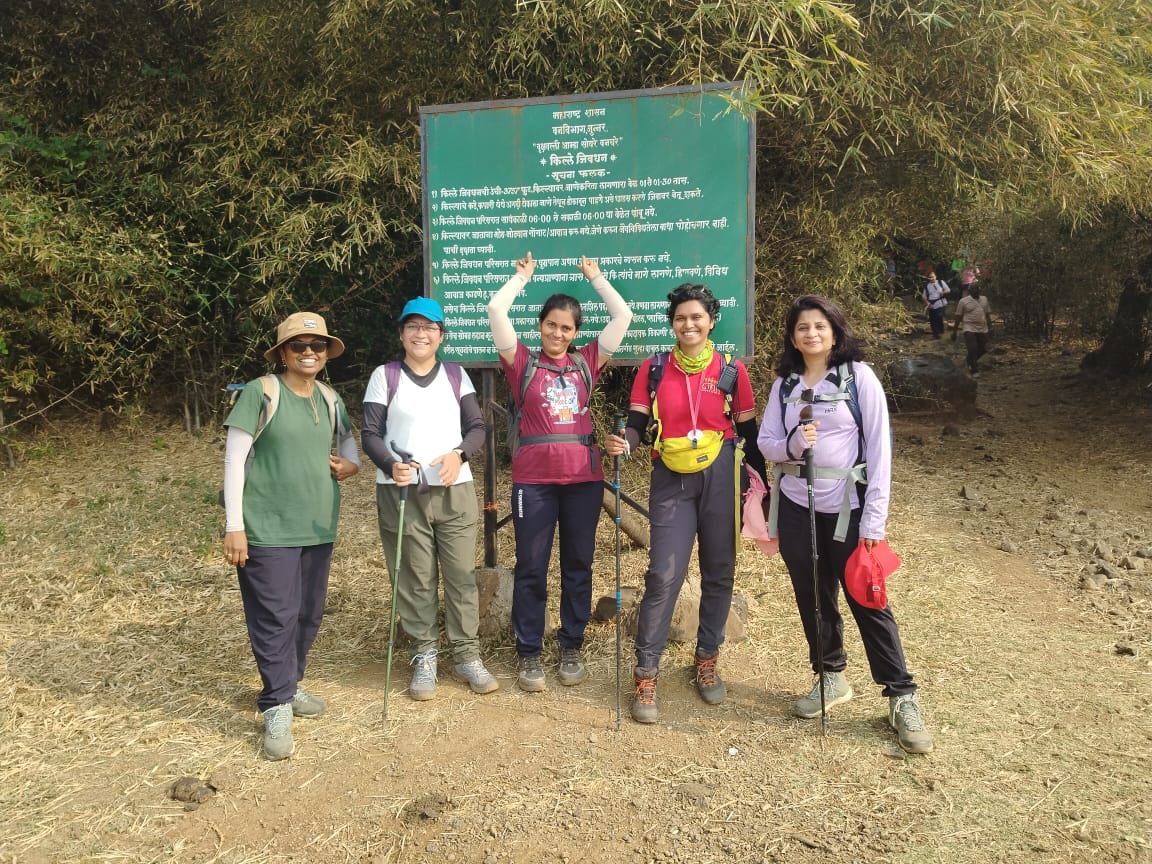The Sahyadri mountain ranges are among the most loved trekking destinations in Maharashtra. From lush green trails in monsoon to rocky forts in winter, the terrain offers both beauty and challenge. However, many beginners underestimate the preparation needed. Having the right trekking gear can make the difference between a safe, enjoyable trek and an exhausting, risky experience.
Whether you’re a student exploring your first fort, a corporate group on a weekend trek, or a regular nature lover, this guide covers the essential trekking gear for Sahyadri treks.
The terrain in the Sahyadris is rocky, slippery, and uneven, especially in the monsoon.
Why do you need good shoes?
- Prevents slips and ankle injuries.
- Provides grip on wet rocks.
- Keeps feet comfortable on long descents
What to look for: Lightweight, non-cotton, quick-drying shoes with a strong sole & most importantly is comfortable for your feet.
While buying the shoes most people get manipulate by someone. So avoid this mistakes.
- Choosing a shoes instead of trekking shoes - Visit only adventure or trekking store to avoid this mistakes.
- Ignoring Waterproofing & Quick Dry Feature
- Prioritizing Looks Over Function - For hiking or treks look is secondory, primary is comfort and safety.
- Not Considering Terrain (Sahyadri vs Himalaya)
- Going for the Cheapest Option
- No maintenance and no care - Mostly after the usage the shoes needs to be well and store in dry place if not going to use for ling time. This care needs to be dome more after the rainy season.
So here is the Pro tips for trekking shoes.
-
Always check: Grip, Fit, Waterproofing, Weight, and Comfort.
-
For Sahyadri: Lightweight, quick-dry shoes with strong grip.
-
For Himalaya: Waterproof, insulated shoes with ankle support
Trekking Shoe Usage & Lifespan
Doesn't matter the shoes is cheap or costly. Every shoes has life. So here is the question - How to calculate the shoe's life.
-
A good pair of trekking shoes usually lasts 500–800 km of trekking (depending on terrain, care, and brand).
-
For weekend Sahyadri trekkers, this could mean 2–3 years of use.
-
For Himalayan or frequent trekkers, heavy use may reduce life to 1–1.5 years.
What's the good time to change the existing shoes? There are some signs where you have to understand that its time to buy news shoes.
-
Sole grip is flat / worn down.
-
Cracks or water seeping inside.
-
Heel or ankle support feels loose.
-
Frequent blisters or foot pain after treks.
How to Extend Shoe Life
-
Dry shoes properly after rain/snow.
-
Avoid direct sunlight (weakens glue).
-
Clean mud & dirt after each trek.
-
Use them only for treks, not daily wear.
At the end of the day, your trekking shoes are your most trusted partner on the trail. Every step in the Sahyadri’s slippery monsoon paths or the Himalayan snowfields depends on how well your shoes support you. Investing in the right pair not only saves you from injuries and fatigue but also ensures that you enjoy the beauty of the mountains without worrying about your footing. Don’t let a poor shoe choice cut short your adventure — choose comfort, grip, and durability over style or shortcuts.
👉 Explore the curated collection of trekking shoes at the Gtribe Store, tested by trekkers for both Sahyadri and Himalayan terrains. Start your next trek with the right pair, and every step will feel lighter, safer, and more confident.


